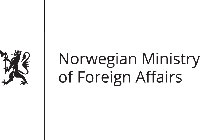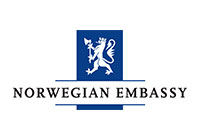.jpg)
The retired General Virgil Balaceanu, former representative of Romania at the NATO HQ in Brussels and former head of the Multinational Brigade in South-East Europe, spoke in an interview for FES/APE foreign affairs bulletin about his outsider's views of what could be the correct directions for a reformation of the Moldovan army. We have discussed about the types of weaponry that the Moldovan army should be equipped with, the threats it may face in a negative scenario, but also about the regional context caused by the Russian invasion of Ukraine. We are inviting you to read about this in the interview below:
Mr Balaceanu, if we were to take an overview of the Moldovan army, what could you say about it?
Viewing it from outside, the most important problem of the Moldovan army is its effective, because it is small in terms of active forces and I don't know what it means now or in the future, the development of reserve forces and possibly of territorial ones.
In general, I would compare it with the situation of the armies of the Baltic countries. I know the situation in Estonia better because I participated in some activities organized by the Federation of Estonian Reservists. For example, they have a very strong reservist component. We can also look at the example of Poland, certainly in another dimension, but they went very far with the principles of territorial defence.
In addition to the active forces, they have also developed the territorial forces. In general, with regards to the military development for conflict or emergency situations, there is the budget-based active military solution. Currently, the annual budget allocated to the Republic of Moldova is insufficient.
There are also problems with provision of equipment, but I am referring now to the numbers - the number of soldiers in the operational forces, the active ones. The financial resources that need to be increased can be directed to the active part, but also to the reserve forces. This is about the possible units that in peacetime have a nucleus made up of active military personnel that can be activated in exceptional situations of siege or mobilization.
They are actually established by reservists coming into these units. The positive part from this point of view regarding the Republic of Moldova is the fact that the mandatory military service has been maintained. So, the Republic of Moldova has a reserve of citizens who have completed their military service.
Is it necessary for the army of the Republic of Moldova to equip itself? We know that in the last 30 years, the Moldovan army has been left in a state of degradation by the politicians who have been at the helm of the state. Is the army reform necessary?
Sure, it needs to get equipped. If we get back to the example of the Baltic states, where the armies are small but have an increasingly visible and consistent reserve force component, they have moved to certain stages of equipping process.
I participated in 1999 in exercises in Lithuania. The situation back then was not at all good in this country either. When they presented the only brigade they had at the time, in addition to several types of military equipment, they also mentioned anti-tank mines. It surprised me then, but I understood the situation.
Before 2000 the anti-tank mines represented for them a means of anti-tank defense. Lithuania now has Javelin missiles, anti-tank weapons, in its forces. Some of them have now been sent to the Ukrainian army.
So Lithuania has over the time got equipped with Western military equipment that ensures their performance. It can also be seen in what is happening in Ukraine. The reaction capacity, at least for the first days of national resistance, can respond to such demands.
Weaponry that can be purchased
There are discussions in Chisinau about the need for a mobile, fast army with firepower, based especially on well-equipped light infantry. What other types of weaponry does Moldova need?
In general, the Moldovan army has mobility, but the part which needs to be developed relates to the enemy contact fire capability. The latter is provided by anti-tank weapons, by short-range or very close-range anti-aircraft missiles. On the other hand, there is also a need to support the infantry forces, respectively the mechanized forces with artillery. The role of artillery is highlighted in Ukraine. We are talking about either rifle artillery or the 152 mm or M777 155 mm howitzer, the latter having not lost its role. These are not extremely expensive equipment, but they can be effective. We can also talk about provision with self-propelled howitzers such as the Panzerhaubitze 2000 or Caesar of French origin, as well as systems with reactive projectiles installations, respectively operational-tactical missile installations which are more expensive and certainly involve more substantial funds.
These are some examples regarding the anti-aircraft and anti-tank defense based on anti-tank and anti-aircraft missiles, as well as howitzer artillery. These are just a few directions. Of course, there can be more. There is another problem currently. The infantry fighting vehicles found their place, but let's get a little into what it means heavy equipment - infantry fighting vehicles or tanks. They are expensive from the point of view of operationalization, but also of maintenance. Instead, there is the amphibious armoured personnel carrier solution. For example, in Romania we have such a transporter called Piranha V, which is a troop transport platform, but also a combat platform for other missions.
I am referring here to the possibility of hitting with the 30 mm cannon or anti-tank missiles. In our case we are talking about the Spike type ones. I am also referring to the possibility of the respective carrier also having an anti-aircraft missile system, because we have the carrier that has an armour providing protection to the personnel, but at the same time with a greater striking power, a better lethal effect, and on the other hand, we are also talking about very good mobility because the wheel transporters move more easily than the combat vehicles or tracked tanks.
An analysis should be made here based on the lessons learned in Ukraine and conclusions should be drawn as to the most necessary equipment, including armament that does not involve very high operational and maintenance costs.
Military equipment as a deterrent
If the Republic of Moldova starts modernizing, getting equipped with more weaponry, could this change the current military superiority of the Transnistrian paramilitary forces?
Certainly, because the paramilitary forces in Transnistria have quite outdated equipment. It is unlikely that they will equip themselves with ammunition and high-performance weaponry in the coming period. At present, what they have as equipment is equivalent to what the Moldovan army has.
It would ensure a favourable balance of forces to the Republic of Moldova when it gets equipped with superior equipment from a technological point of view and the effect on the target, which will constitute a definitive deterrent.
The elements I have mentioned, and there are also others, do not mean that the army of the Republic of Moldova will be equipped for large-scale offensive operations. It will be equipped for defense missions, to be more resistant. When we talk about defense, it is about the ability to resist, which is also an element of military deterrence for the enemy. Because if you know that the other one- the enemy - has high-performance anti-tank missiles, when you attack them with tanks or with infantry fighting vehicles or transporters of lower-performance, with obsolete armour, the enemy is aware from the very beginning that it will have big losses and here the deterrent factor appears.
So, on the one hand, equipment is important, and on the other, the reserve forces that we have talked about earlier. There is one more component that can be developed - the territorial forces.
The Poles have developed them on a voluntary basis, and in Ukraine they were established during the invasion. Ukraine passed the Territorial Forces Act in December, began selection in January, and on February 24th the invasion began. From the open data at that time, they had 10,000 fighters in the Territorial Forces, a figure I believe to be real, communicated by the Ministry of Defense in Kyiv. When talking about the more than 700,000 fighters in all the force structures of Ukraine, almost 100,000 belong to the territorial forces.
The advantage of the Republic of Moldova is that it has reservists. They can be directed towards the units set up in the war, but also towards the territorial defense units.
Interoperability with the Romanian troops
How do you see the interoperability between the Romanian and Moldovan troops? We know that the Moldovan military often come to Romania for training. How necessary are such exercises?
These exercises are necessary because it is a joint training programme. We do not have the language barrier. Moreover, the Romanian and Moldovan soldiers speak a good English. On the other hand, they also have similar equipment.
So we can exercise together. A big part of the Romanian reservists from the association I’m leading also participate in the training exercises. There was a training exercise of the training battalion from Botoshani in which soldiers from the “Alexandru cel Bun” Military Academy participated. They took part in the firing with the 152 mm howitzer. On the other hand, we also have 122 mm and 82 mm launchers, infantry weapon systems and heavy infantry weapons that are similar in most cases. And then, joint training is related to procedures, experience and exchange of experience so that the respective types of weaponry are used on the battlefield best.
Such collaboration is needed, it is absolutely necessary because a higher level of training is achieved on both sides through these joint activities. They have no other purpose whatsoever. There is another reality, many military leaders from the Republic of Moldova, even those in the junior category, have training in Romania. They already know what the Romanian army means. I don't know of any major differences outside of what the troops or various equipment categories mean, but rather there are a lot of similarities. Given these similarities we can say that there is interoperability. Based on this interoperability, joint instruction is mutually beneficial.
Mr Balaceanu, we know that there are over 1 million Romanian citizens with Romanian passports in the Republic of Moldova. At the same time, for several years, Romania has started a programme of providing the military with modern weapons, especially from the USA. The fact that Romania equips itself militarily puts the Republic of Moldova under a greater security umbrella or not?
That’s a very good question. We should look at security and defense issues in a regional context, beyond what it means to belong or not to NATO or the EU. The European Union has an intention regarding a possible defense policy.
There is talk of a Europe of defense and this issue will be more and more present in the European context, not necessarily in the NATO context. And issues related to defense, national security in a regional context must be discussed. Why? Because in crisis situations, a problem created in one state also influences the neighbouring state. And after all, issues related to defense, military deterrence, national security -all of these have a strong regional component.
For example, because I commanded a multinational brigade in Turkey, I know the Turkish army very well and I believe that Romania should do more through bilateral relations, so that Turkey is as present as possible in the context of NATO defense, but also within certain reginal issues. For example, we have problems with the agreement on the straits [Montreux Convention], and then the presence of a NATO grouping in the Black Sea is a very complex issue. But there are three states bordering the Black Sea. One is Turkey, which has a very powerful navy, superior to the Russian Black Sea Fleet. So the regional cooperation is extremely important.
There are other situations like the ones between Belgium and the Netherlands. These countries have reached the situation where one state carries out the repairs for the corvettes and the other state for the frigates.
Regional cooperation has additional advantages. Certain capabilities that you do not have can be supplied by the other country. That's what we have to consider in the context of an alliance. But I am getting back to your question, namely the positioning of the Republic of Moldova as a candidate state and future member of the EU, along with the issue of defense at the EU level. This will become more acute, because so far there are no special results, although the EU has in a system of troop rotations several battle groups. The latter have been activated in very few situations. The Republic of Moldova, in perspective, can develop cooperation with Romania, including on the issues of the EU related to defense and security of EU members.
Comments
Donors:






Partners:









